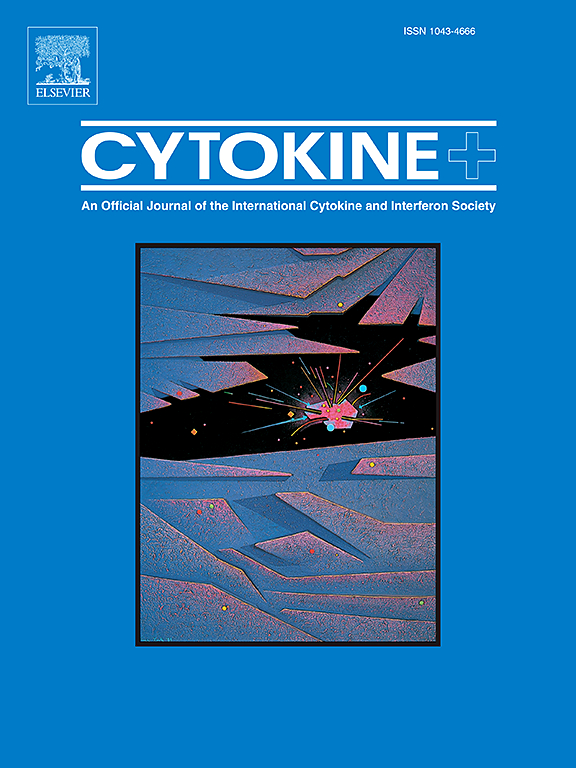Elevated CXCL1 expression contributes to the development of pediatric Crohn's disease and serves as a diagnostic marker: A reanalysis based on the integrative bioinformatics
IF 3.7
3区 医学
Q2 BIOCHEMISTRY & MOLECULAR BIOLOGY
引用次数: 0
Abstract
Purpose
Pediatric Crohn's disease (PCD), which is a severe illness impacting the physical health of children. Nevertheless, there is still a lack of highly efficient diagnostic markers. Here, we aim to develop efficient diagnostic and treatment approaches, gaining a deeper understanding of the molecular mechanisms and potential targets causing PCD.
Methods
PCD datasets were downloaded from the Gene Expression Omnibus (GEO) database. Differentially expressed genes (DEGs) between PCD and normal were screened by Limma package. DEGs were subjected to further analyses utilizing GO, KEGG, GSEA and PPI analysis. The CIBERSORT analysis aimed at examining the correlation between CXCL1 and immune infiltration. The clinical diagnostic value of CXCL1 and drugs targeting CXCL1 were analyzed through ROC and CMap database. Additionally, intestinal mucosal tissue samples from PCD patients were collected to conduct qRT-PCR for detecting the expression of CXCL1.
Results
Overall, 71 DEGs were selected from GSE101794 and GSE93624. A total of 15 hub genes were identified by the constructed PPI network, among which CXCL1 was significantly increased in intestinal tissue in the PCD patients. DEGs between high- and low-CXCL1 expression were mainly enriched in the IL-17 and NF-kappa B signaling pathways. ROC analysis showed that AUC values of CXCL1 were 0.908, 0.945 and 0.890 based on GSE101794, GSE93624 and GSE57945, the similar results was obtained using qRT-PCR. The immune infiltration results indicate that CXCL1 could potentially play a regulatory role in the immune response of PCD.
Conclusions
We have determined that CXCL1 might have a crucial involvement in the advancement of PCD, thus having the potential to be a diagnostic marker in order to enhance treatment choices for PCD.

CXCL1表达升高有助于儿童克罗恩病的发展,并可作为诊断标志物:基于综合生物信息学的再分析
目的儿童克罗恩病(PCD)是影响儿童身体健康的严重疾病。然而,目前仍缺乏高效的诊断标志物。在这里,我们的目标是开发有效的诊断和治疗方法,深入了解引起PCD的分子机制和潜在靶点。方法从Gene Expression Omnibus (GEO)数据库下载spcd数据。采用Limma包筛选PCD与正常人的差异表达基因(DEGs)。利用GO、KEGG、GSEA和PPI分析对deg进行进一步分析。CIBERSORT分析旨在检测CXCL1与免疫浸润的相关性。通过ROC和CMap数据库分析CXCL1及靶向CXCL1的药物的临床诊断价值。收集PCD患者肠黏膜组织样本,进行qRT-PCR检测CXCL1的表达。结果共从GSE101794和GSE93624中筛选出71个菌株。构建的PPI网络共鉴定出15个枢纽基因,其中CXCL1在PCD患者肠组织中显著升高。cxcl1高、低表达的deg主要富集于IL-17和nf - κ B信号通路。ROC分析显示,基于GSE101794、GSE93624和GSE57945的CXCL1的AUC值分别为0.908、0.945和0.890,采用qRT-PCR得到类似结果。免疫浸润结果提示CXCL1可能在PCD的免疫应答中发挥潜在的调节作用。我们已经确定CXCL1可能在PCD的进展中起着至关重要的作用,因此有可能成为一种诊断标志物,以提高PCD的治疗选择。
本文章由计算机程序翻译,如有差异,请以英文原文为准。
求助全文
约1分钟内获得全文
求助全文
来源期刊

Cytokine
医学-免疫学
CiteScore
7.60
自引率
2.60%
发文量
262
审稿时长
48 days
期刊介绍:
The journal Cytokine has an open access mirror journal Cytokine: X, sharing the same aims and scope, editorial team, submission system and rigorous peer review.
* Devoted exclusively to the study of the molecular biology, genetics, biochemistry, immunology, genome-wide association studies, pathobiology, diagnostic and clinical applications of all known interleukins, hematopoietic factors, growth factors, cytotoxins, interferons, new cytokines, and chemokines, Cytokine provides comprehensive coverage of cytokines and their mechanisms of actions, 12 times a year by publishing original high quality refereed scientific papers from prominent investigators in both the academic and industrial sectors.
We will publish 3 major types of manuscripts:
1) Original manuscripts describing research results.
2) Basic and clinical reviews describing cytokine actions and regulation.
3) Short commentaries/perspectives on recently published aspects of cytokines, pathogenesis and clinical results.
 求助内容:
求助内容: 应助结果提醒方式:
应助结果提醒方式:


